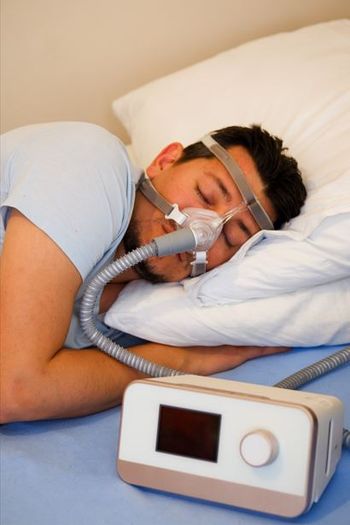
ASNC: Coronary Calcium Score Predicts Vascular Disease in Asymptomatic Type 2 Diabetes
MONTREAL -- A coronary artery calcium score, obtained via CT, can accurately predict the development of atherosclerotic and ischemic disease in asymptomatic patients with type 2 diabetes, according to a report at the American Society of Nuclear cardiology meeting here.
MONTREAL, Sept. 12 -- Obtaining a coronary artery calcification score via a CT scan can accurately predict the development of atherosclerotic and ischemic disease in asymptomatic patients with type 2 diabetes, a British team reported here.
Avijit Lahiri, M.B., of Wellington Hospital in London and colleagues undertook to determine whether a quick and easy test, such as CT coronary artery calcium scoring, could be used to risk stratify asymptomatic patients with type 2 diabetes for vascular disease.
They measured baseline coronary calcium level of 510 asymptomatic type 2 diabetic patients, Dr. Lahiri reported at the American Society of Nuclear Cardiology meeting here. Those with a calcium score over 100 underwent myocardial perfusion scintigraphy (MPS) to look for ischemic disease.
These parameters, along with an array of blood tests, were re-evaluated regularly for a mean of 2.5 years. Patients who had cardiovascular events or underwent coronary revascularization did not undergo follow-up imaging.
At baseline, 54% of patients had coronary calcium scores under 10%; 20 had scores between 11 and 100; 15% had scores between 101 and 400; 6% had scores between 401 and 1,000; and 5% had scores over 1,000.
Twenty patients experienced cardiac events and were excluded from the trial. Among the 490 remaining patients, 402 returned for serial follow-up testing, but scans for four patients were technically inadequate.
Among the 398 remaining patients, progression of calcification, defined as a change in the square root transformed volumetric calcification score of at least 2.5 mm3, occurred in 119 patients (30%). Among patients who experienced this progression, 23 (6%) had no evidence of calcification at baseline. Four patients overall (1%) experienced regression in their calcification. Dr. Lahiri said he was surprised to find such a high degree of atherosclerotic disease in asymptomatic patients.
Neither of the two serum markers for systemic inflammation assessed (high sensitivity C-reactive protein [Hs-CRP] and interleukin-6 [IL-6]) correlated with baseline levels of coronary artery calcification. According to univariate analysis, however, age, male gender, presence of hypertension, baseline HbA1c, calcification score, serum IL-6, and plasma osteoprotegerin (OPG) were all predictors of atherosclerosis progression. According to multivariate logistic regression analysis adjusted for baseline calcification score, serum HbA1C, plasma OPG, and serum IL-6 were each independent predictors of progression of calcification.
Among patients who underwent MPI, 24 (30%) had abnormal findings at baseline. Of these, progression of ischemia was seen in 14 (18%) and regression was seen in 8 (10%). during follow-up. During this same time period, new perfusion abnormalities were found in 18 patients (23%). Patients with new or increasing MPS abnormality had a greater increase in calcification score than those without (mean 5.2 mm3 vs. 2.8 mm3, p = 0.001). There was also a weak correlation between summed stress score (SSS) and calcification score.
"To my surprise, there was a very close relationship between the amount of coronary atherosclerotic burden and the silent ischemic burden," said Dr. Lahiri. "[Also,] those who did not have significant atherosclerosis to start with had very little increase. So, it means you can effectively stratify your groups. Normal CT: active medical management. High coronary calcium score: active follow-up and management [including] nuclear [imaging].
Even if you take that limited group, it will increase nuclear perfusion [imaging] by 20% because most of these patients are not being [referred] because they're asymptomatic. We're waiting until they're hit by disease, and then of course there is hospitalization, heart failure, and you can imagine the cost of all that. Enormous cost."
Given the large number of asymptomatic patients with type 2 diabetes worldwide, Dr. Lahiri would like to find the simplest possible screening tool. He is encouraged that CT calcium scoring appears to be of value, although he adds that these findings should be validated in a larger trial. Ideally, he would like to find something even cheaper and faster, such as a blood test, that could confer a similar predictive value. His research continues.
This trial received funding from Bristol-Myers Squibb and GE Healthcare.
Newsletter
Enhance your clinical practice with the Patient Care newsletter, offering the latest evidence-based guidelines, diagnostic insights, and treatment strategies for primary care physicians.

















































































































































































































































































